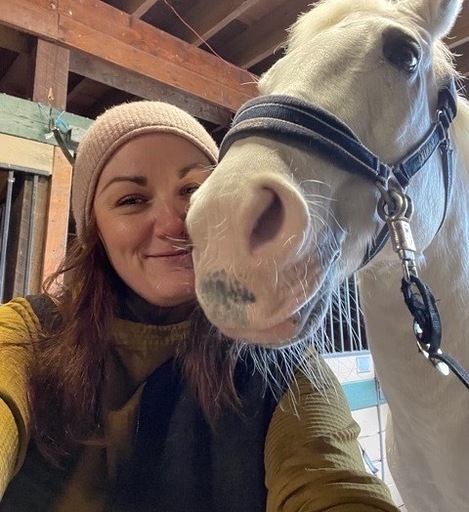Take a challenging entry-level position in the sales industry with high expectations and an unrelenting daily schedule. Then add a hyper-competitive environment and an opaque path to promotion.
Sounds like a terrible mix. But for too long, that’s been the de facto experience for a sales development representative.
“There’s an unspoken dog-eat-dog mentality, and you have to be at the top. But at the same time, it’s not clear how you get there,” says Matt Rohr, a sales enablement manager at ZoomInfo. “That didn’t work for anyone.”
Something had to give. Instead of an industry-standard learning curve that’s part gatekeeping and part gladiator contest, ZoomInfo sales leaders got together to revamp the way SDRs are trained, from onboarding all the way to opportunities for promotion.
This new learning experience, dubbed the SDR Academy, launched in January 2022. Within a month, the results were overwhelmingly positive: sales reps were doubling or tripling the number of weekly calls and queuing up nearly twice as many completed meetings compared to the previous quarter.
“What shocked us was the amount of improvement. I knew there would be a lift, but didn’t expect it to be this much,” says David Huryn, VP of sales enablement at ZoomInfo and one of the chief architects of SDR Academy.
If it’s Broke, Fix it
The first challenge that ZoomInfo sought to address was SDR turnover. Nearly 40% of reps in the sales industry turn over in less than two years, according to The Bridge Group. ZoomInfo experienced similarly high attrition rates with their talented SDRs.
The sales leadership team identified the problem as a lack of clear expectations. When SDRs don’t know which benchmarks they need to meet in order to move up, and aren’t empowered with the know-how to meet those targets, they get discouraged. And when they get discouraged, they leave.
The second challenge was a drop in account executive productivity. ZoomInfo sales managers found that homegrown AEs, those who came up through the internal SDR ranks, outperformed external hires brought directly into the AE role.
ZoomInfo sales leaders examined a broad set of metrics to understand the situation and discovered that the two challenges were related. SDRs who don’t see a path to promotion leave before they’re sufficiently seasoned, and external hires who help fill the promotion gap face a natural learning curve.
“Internal hires understand our culture and sales motions, they already have a great foundation for prospecting with our messaging,” Huryn says.
So, why not just promote more internally? Without a clearly mapped-out path for SDRs to follow, it was difficult to assess their proficiency and readiness for the next step in their career. It also left managers without a formal way to assess the candidate pool for who was available for promotion.
Even within the modern sales culture of ZoomInfo, the road from SDR to account executive mirrored the old world of sales. It remained a personality-driven process that was difficult to replicate, scale, and most importantly, didn’t put the SDR in the driver’s seat of their employee journey.
To remedy this, ZoomInfo sales leaders partnered with human resources to identify the key attributes, knowledge, and skills of a fully developed SDR. Together, they built a curriculum that defines both qualitative and quantitative benchmarks — such as submitting a prospect analysis and meeting KPIs consistently — for SDRs as they progress through the ranks.
“To people who are new to sales, the SDR Academy provides great clarity about what they should be learning so they can be as successful as possible — especially those who might be apprehensive about sales,” Rohr says. “The heart of the academy is clear targets and clear goals for every step of the process. Instead of ambiguity on a distant path to promotion, we see people lean in and find success sooner.”
This proved to be a welcome change for Steven Bloxsom, a senior inbound SDR who was part of the inaugural SDR Academy cohort. He landed at ZoomInfo after having already experienced the grind of cold-calling in a traditional sales environment.
“How do I get promoted? What’s the promotion process? At other companies it’s mostly, here’s all the stuff, good luck,” Bloxsom says. “Here, it feels fair, and it’s nice to know that you can get help, know where you’re going, and that you have options to move up.”
Rolling Out a New Vision for SDR Training
After defining what a fully scaled SDR should be capable of doing, sales leadership curated courses designed to develop new reps. In addition to outlining ZoomInfo’s offerings, the lessons cover platforms and tools sales reps need, including selling skills, roleplays, and leadership skills.
SDRs follow these learning paths, which are a combination of online classes, practical demonstrations to show mastery, and clearly communicated business KPIs to hit and maintain. As SDRs progress, they earn badges that they can share on LinkedIn, demonstrating their proficiency.
“We took the training back down to the basics and then rebuilt it to be a structured progression that SDRs can easily follow and control,” Huryn says. “The entire program is set up so that incoming reps have everything from the time they start with us at ZoomInfo. It’s a mapped-out, predefined path. There’s no winging it.”
This defined path component of the academy proved to be one of its most valuable, putting the SDRs in control of their experience, education, and road to promotion.
“I know what numbers I need to hit and what I need to do and I can go at my own pace. If I want to put in more work and get promoted faster, I can do that,” Bloxsom says.
A sense of ownership and a self-directed pace have had another positive effect. Progressing through the academy doesn’t guarantee a promotion, but it does give every SDR clarity about what they need to accomplish in order to be considered — and none of it involves the dreaded game of office politics.
“It’s not about currying favor with your manager or having a buddy-buddy relationship with them. You’re no longer at their mercy. You get to decide when you can succeed,” Rohr says. And from the managers’ perspective, they now have an easily identifiable pool of candidates who are qualified and ready for promotions.
Next-Level Training Expands SDR Recruit Pool
If SDR roles are perceived as grueling with an ambiguous career path, how can companies counter this narrative to drive recruitment for the hundreds of thousands of open sales roles? ZoomInfo is using the transparency and autonomy provided by the SDR Academy curriculum to attract recruits. This is especially true for individuals from more diverse backgrounds who might have avoided the sales industry altogether, having been put off by the shut-up-and-dial cliches.
“The path to promotion laid out in the SDR Academy is a democratic process that is especially helpful in breaking down the sales stereotype. The feedback we were getting was that sales was a boys’ club and a privileged buddy system where you have to make the right friends,” Rohr says. “There are lots of qualified people who might have been disenchanted by that insider culture.”
Onboarding surveys for the initial cohorts show high satisfaction with the SDR Academy, particularly with reps’ confidence to do their job. This sentiment is echoed by Bloxsom.
“I learned a lot about leadership,” he says. “It’s less about ZoomInfo and more about you as a person, honing your skills. It didn’t just prepare me for this job, but also for a future job.”
If the first-quarter success of the academy is an indicator, the secret to powerful SDRs is empowerment.
“You get to decide when you succeed. You can run freely and find that growth opportunity. We provide a space where we can serve the hungriest and most eager,” Rohr says. “If you want to come here and rip it up, the Academy is here for you.”
Perhaps most importantly, SDRs working their way through the academy curriculum are producing more qualified, confirmed business opportunities at a faster rate than before. And sales leadership sees even more potential: ZoomInfo plans to roll out the program to the wider SDR team in the near future.


